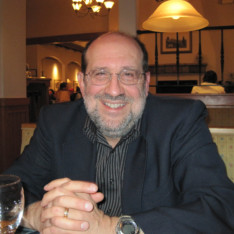Free to Choose a Possible Cure

Most accounts say COVID-19 arose from the live animal market in Wuhan, possibly from bats. In that account the pandemic was an “accident” arising from negligence but not intention. In another account, dismissed by the experts as a conspiracy theory, the virus was created, and accidentally released, from the Wuhan Institute of Virology. In either case, the pandemic was caused by some sort of “accident.” The main question at this moment is, how do we fix the accident?
The experts usually say that accidents are fixed by pre-planned responses from well-trained experts. So in the case of hurricanes, earthquakes, and bombings, having well-trained first-responders is the key. But Amanda Ripley in The Unthinkable shows case after case where the outcome for victims depends most on what happens in the time before the first responders respond. It depends on the alert, nimble, initiative of untrained bystanders.
What sort of society is likely to have alert and nimble bystanders: a hierarchical society where the prudent wait for approval from Beijing, or an entrepreneurial society where the bold act on their own?
We are told this is war. And the default narrative of wars is that they must be centrally planned by those at the top of a rigid hierarchy. In Corps Business, David Freedman argues that the U.S. Marine Corps’ rigid hierarchy partly explains why they are one of the most effective fighting organizations in history.
The narrative is plausible. But in Startup Nation Senor and Singer argue that the Israeli military’s relaxed hierarchy explains why they are one of the most effective fighting organizations in history. Senor and Singer even go so far as to argue that pushing decision-making down to the grunts explains why ex-Israeli soldiers often go on to become successful entrepreneurs. Those in the trenches often have timely local knowledge that is key to making the right decisions before it is too late. (Read Blackhawk Down for gut-churning illustration.)
In Wuhan, Dr. Li Wenliang warned from the trenches. But the central planners in Beijing, not appreciating his initiative, sent the police to silence him. Later, he himself suffered a severe case of COVID-19. The front pages of our newspapers showed him receiving oxygen, his eyes sadly and intently staring at us during his last hours—a jarring image we want to forget.
By all accounts, Dr. Li Wenliang was a good physician and a heroic human being. Good physicians are good at observing patterns. But they are not alone: you do not need a white coat to observe patterns.
Starting in the late 1400s, several sea captains observed the pattern that when their sailors had citrus fruit to suck on, they had fewer symptoms of scurvy. Well into the 1700s, much of the medical establishment rejected this pattern as mere anecdotes from non-professionals.
Nurse Evelyn Lundeen observed the pattern that premature babies born with jaundice improved, if their cribs received some sunlight (Miracle at Coney Island, loc 621). Several years passed before the medical establishment caught up.
In oncologist Azra Raza’s The First Cell, she tells how medical researchers first developed luspatercept to reduce lytic bone lesions in multiple myeloma patients. But when given to patients, the researchers observed that it serendipitously greatly increased the patients’ hemoglobin. So the researchers entrepreneurially switched to using luspatercept as a therapy for anemia instead.
These are not one-off cherry-picked examples. Martin Meyer’s Happy Accidents reports case after case of major medical advances that occurred when an alert physician observed an accidental serendipitous pattern, and then acted on what they had observed. The accident of an unexpected disease can be countered by the accident of a serendipitous cure.
The experts usually say that we must not act on the basis of patterns that we and our physicians observe. The experts usually say we must wait for the gold standard of medical knowledge, the randomized double-blind clinical trial.
Such trials are mandated by the Food and Drug Administration for approval of new therapeutic drugs. Because conducting such trials is so expensive, the mandate favors large incumbent firms. This discourages breakthrough cures, because breakthroughs usually are achieved by entrepreneurial startups.
Another cost of mandated trials is that patients are enrolled through referrals from physicians who practice the current therapies. Medical entrepreneurs wanting to set up a trial of a potential breakthrough often find they cannot enroll enough patients. So the trials that actually occur are biased toward minor incremental advances instead of the breakthroughs that might make the incumbent therapies obsolete.
These problems would be costly, but necessary, if the trials were the only source of knowledge on the effectiveness of drugs. But they are not. We observe that parachutes protect those jumping from planes, without ever having conducted a randomized double-blind clinical trial.
Being a physician must have been much more fulfilling when a physician could observe patterns and act on what she observed—when a physician could actually practice medicine. Today a physician risks being sued or fired if they do not follow the official protocols, even when the physician observes a better way. Our physicians do not need approval from the Central Committee in Beijing. But too often they do need approval from the Food and Drug Administration in Washington.
Several physicians have observed patterns with COVID-19. Some have observed that hydroxychloroquine (perhaps combined with azithromycin and zinc) reduces the number of COVID-19 patients who eventually need a ventilator. Hydroxychloroquine has been used for decades against malaria, lupus, and arthritis, so its general safety and usually minor side-effects are well-known.
Other physicians have observed that plasma from those who have recovered from COVID-19, mitigates the effects of it on new patients. Yet other physicians have observed that the Ebola drug remdesivir mitigates the effects of COVID-19.
Of course much is uncertain. The outcomes of racing in NASCAR, climbing Mount Everest, and launching into space are uncertain. Yet we allow adults to choose to race, climb, and launch. So, how can we forbid a patient with Covid-19 from taking hydroxychloroquine or remdesivir?
We should be free to choose a possible cure.












